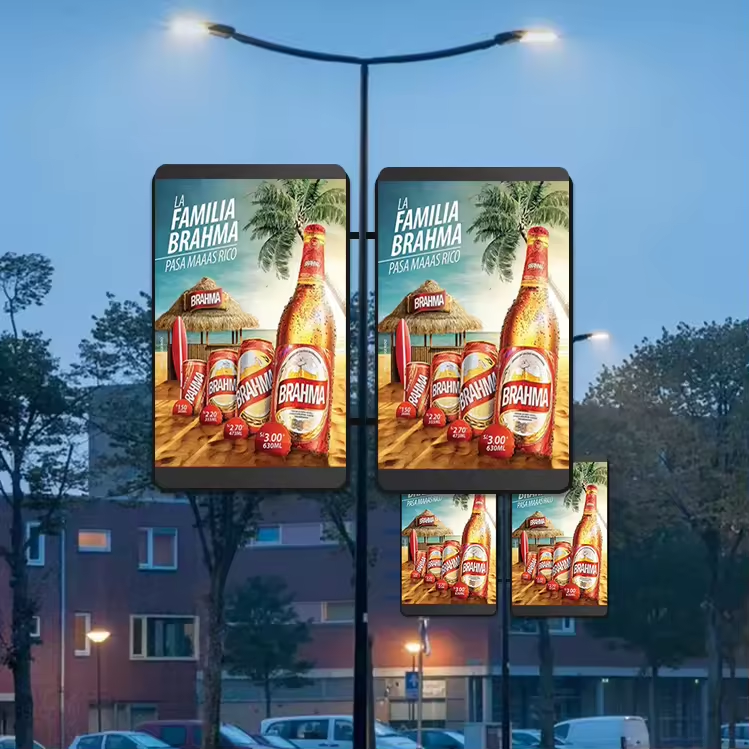Introduction
The continuous development of technology has made LED displays an essential part of modern society, widely used in stage performances, commercial displays, and outdoor advertising. Rental LED displays have gained popularity due to their portability, flexibility, high brightness, and excellent color reproduction. In the design of indoor and outdoor rental LED displays, the modular LED screen design significantly simplifies maintenance tasks, enhances overall reliability, and improves the efficiency of use. This article will explore some of the advantages of modular LED display panels.

Improved Maintenance Efficiency
First, compared to traditional large LED displays, modular LED screens allow for simpler maintenance and repair. Traditional large LED screens typically use large LED panels as the basic unit, so if one LED lamp fails, the entire panel needs to be replaced. However, modular LED screen use a splicing method consisting of small LED unit modules. When an LED lamp in a module fails, only that module needs to be replaced, rather than the entire screen. This modular design greatly simplifies maintenance work, reduces repair costs and time, and improves maintenance efficiency.
Easier Troubleshooting
Secondly, the design of modular LED display makes troubleshooting more convenient. Unlike other systems, the connections between modules in a modular LED display are very simple, meaning that when a screen malfunctions, we can isolate and test each module to identify the source of the fault. If a particular module is found to be faulty, it can be quickly located and replaced without affecting the normal operation of the entire display. This modular design not only simplifies the troubleshooting process, but also ensures the screen’s usability during faults.

More Convenient Installation and Maintenance
In addition, modular LED display panels feature front and rear maintenance designs, making installation and maintenance more convenient. For example, with large outdoor fixed LED screens, maintenance can only be done by disassembling from the rear of the LED cabinet, which is quite troublesome. In contrast, the front and rear maintenance design of modular LED screen allows for disassembly and maintenance from either the front or rear, greatly improving maintenance efficiency. In addition, the modular LED display cabinet also adopts a modular HUB design, independent power boxes, and plug-in design, avoiding excessive wiring and making installation and maintenance more convenient.


Customizable Options
Further, SRYLED’s private model rental LED video wall offers various customizable options that customers can choose according to their needs.
Pixel Pitch: Multiple pixel pitches are available, ranging from P1.56 to P3.91.
Cabinet Size: Two cabinet sizes are available, 500x500mm and 500x1000mm.
Splicing Method: Each LED cabinet is equipped with arc locks on the edges, allowing the LED screens to be spliced into a large curved LED screen by adjusting these locks.
Installation Environment: This LED display offers ultra-high protection, suitable for both indoor and outdoor environments.
Installation Methods: Options include floor-mounted, suspended, and wall-mounted installations.
Of course, there are many other customizable features not listed here. For more details, please click here.

Display Adjustment and Upgrade
In addition, modular LED screens provide convenience for adjusting and upgrading display effects. The modular design allows the screen size to be spliced and adjusted according to needs, enabling customized displays in terms of size and shape. In addition, the modular design supports easy upgrades and adjustments to display effects. By simply replacing modules or adding additional functional modules, parameters such as brightness and color reproduction can be changed to suit different environments and needs.

Conclusion
In summary, modular LED display panels greatly simplify maintenance tasks and enhance the reliability and effectiveness of the entire display system. The modular design makes repairs simpler, troubleshooting easier, and improves display usability. At the same time, the modular design also facilitates the adjustment and upgrade of display effects, meeting the needs of different users. As technology continues to advance, the modular design of LED displays will become more refined, bringing more convenience and innovation to LED displays.































































